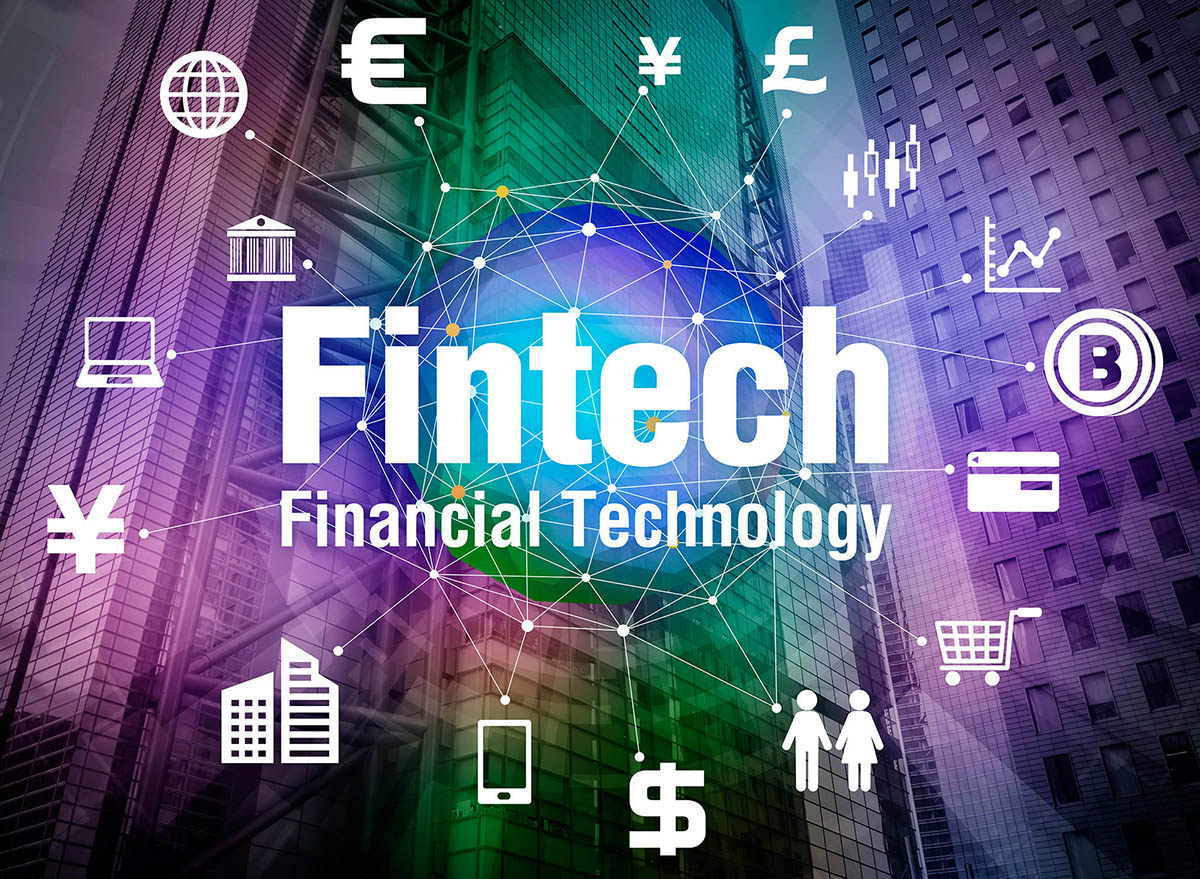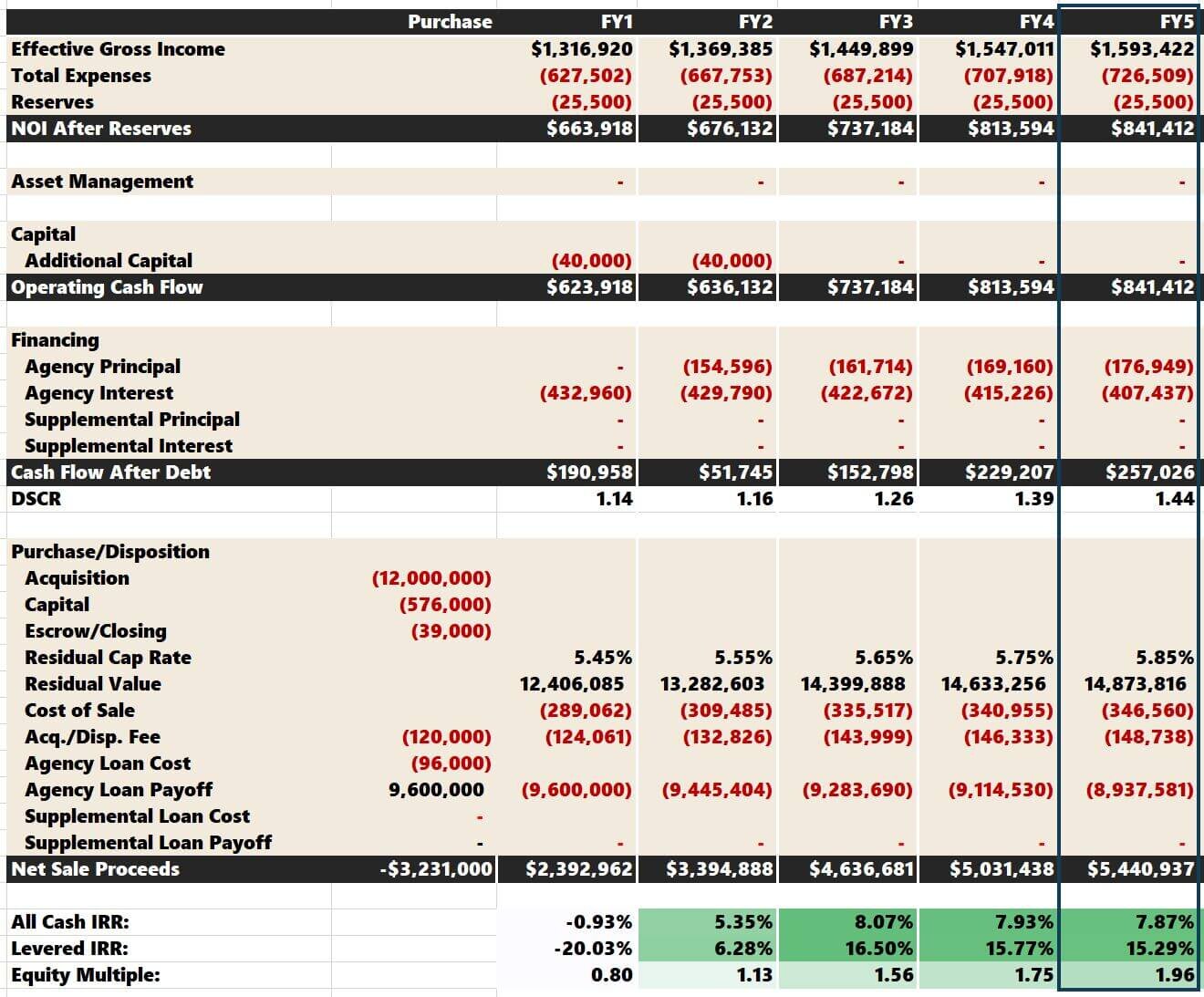

Finance
How Does Fintech Lending Work?
Modified: February 21, 2024
Discover how fintech lending revolutionizes finance with its innovative approach. Understand the workings and benefits of this disruptive financial technology.
(Many of the links in this article redirect to a specific reviewed product. Your purchase of these products through affiliate links helps to generate commission for LiveWell, at no extra cost. Learn more)
Table of Contents
- Introduction
- What is Fintech Lending?
- Advantages of Fintech Lending
- Challenges in Fintech Lending
- The Process of Fintech Lending
- Underwriting and Risk Assessment
- Credit Scoring in Fintech Lending
- Loan Approval and Disbursement
- Repayment and Collection Process
- Technology and Innovation in Fintech Lending
- Regulatory Environment for Fintech Lending
- Conclusion
Introduction
Fintech lending, also known as alternative lending or online lending, has emerged as a disruptive force in the finance industry. With the advancement of technology, traditional lending systems have evolved, giving rise to new and innovative ways of borrowing and lending money. Fintech lending platforms leverage digital tools and data analytics to streamline the loan application process, provide faster approvals, and offer competitive interest rates.
The tremendous growth of fintech lending can be attributed to its ability to cater to the needs of borrowers who may have been underserved or overlooked by traditional banking institutions. By utilizing advanced algorithms and big data analysis, fintech lenders have the potential to assess creditworthiness accurately and efficiently, revolutionizing the lending landscape.
Moreover, fintech lending has not only provided convenience to borrowers but has also opened up new investment opportunities for individuals and institutional investors alike. In this article, we will explore how fintech lending works and delve into its advantages, challenges, and the technology behind it.
What is Fintech Lending?
Fintech lending refers to the process of using technology and digital platforms to provide loans to individuals and businesses. It is a modern and innovative approach to lending that bypasses the traditional banking system and connects borrowers directly with lenders. Fintech lending platforms leverage advanced algorithms, data analytics, and digital automation to streamline the loan application and approval process.
Unlike traditional lenders, such as banks or credit unions, fintech lenders typically operate online and have a more flexible and agile lending approach. They focus on utilizing technology and data-driven methods to assess creditworthiness and determine interest rates, making the borrowing process faster and more accessible for borrowers.
One of the key features of fintech lending is its ability to utilize alternative data sources for credit analysis. Unlike traditional lenders who heavily rely on credit scores and financial history, fintech lenders can incorporate other factors such as social media presence, digital footprints, and even educational background to assess creditworthiness. This enables them to cater to individuals who may not have a robust credit history or those who have been overlooked by traditional lenders.
Fintech lending encompasses various forms of loans, including personal loans, business loans, student loans, and even peer-to-peer lending. The rise of fintech lending platforms has also opened up new avenues for crowdfunding and micro-lending, allowing individuals to invest in loans and support small businesses.
The growth of fintech lending has been fueled by the increasing demand for fast and convenient access to credit, particularly among underserved populations. These platforms have the potential to revolutionize the lending industry by providing borrowers with alternative options and improving the overall borrowing experience.
Advantages of Fintech Lending
Fintech lending offers several advantages compared to traditional lending methods, making it an attractive option for both borrowers and investors. Below are some key advantages of fintech lending:
- Convenience and Speed: Fintech lending platforms have simplified the loan application process, allowing borrowers to apply for loans online from the comfort of their homes or offices. The use of advanced technology and automation enables quick loan approvals, often within minutes or hours, compared to the lengthy process involved with traditional lenders.
- Flexibility: Fintech lenders often have more flexible lending criteria compared to traditional banks. They take into account a wider range of factors to assess creditworthiness, allowing individuals with limited credit history or non-traditional income sources to qualify for loans. This flexibility widens the opportunities for borrowers who may have otherwise been rejected by traditional lenders.
- Lower Costs: Fintech lenders have lower operating costs compared to traditional banks, as they do not have the same infrastructure and overhead expenses. As a result, they can offer competitive interest rates and lower fees to borrowers.
- Accessibility: Fintech lending has made credit more accessible to underserved populations, including individuals with low credit scores or limited access to traditional banking services. By leveraging technology and alternative data sources, fintech lenders can provide loans to those who may have been excluded by traditional financial institutions.
- Transparency: Fintech lending platforms provide transparency in terms of loan terms, interest rates, fees, and repayment schedules. Borrowers have a clear understanding of the total cost of the loan upfront, enabling them to make informed decisions.
- Increased Investment Opportunities: Fintech lending platforms allow individual and institutional investors to diversify their investment portfolios by investing in loans. This provides an opportunity for investors to earn attractive returns outside of traditional investment options.
Overall, fintech lending offers a more efficient and inclusive approach to borrowing and investing. It combines technology, data analytics, and innovative business models to provide a convenient and accessible solution for individuals and businesses in need of financing.
Challenges in Fintech Lending
While fintech lending has gained significant popularity and disrupted the traditional lending landscape, it also faces several challenges. These challenges can impact both borrowers and lenders in different ways. Here are some key challenges in fintech lending:
- Regulatory Compliance: As a relatively new industry, fintech lending operates in a regulatory environment that is still evolving. Fintech lenders must navigate through complex and varying regulations across different jurisdictions, ensuring compliance with consumer protection laws, anti-money laundering regulations, and data privacy guidelines. Striking the right balance between innovation and regulatory compliance can be a challenge for fintech lenders.
- Risk Assessment: Fintech lenders heavily rely on data analytics and algorithms to assess creditworthiness and determine loan approval. While alternative data sources can provide valuable insights, they may also introduce new risks. There is a constant need to refine and improve risk assessment models to ensure accurate credit evaluations and minimize default rates.
- Data Security: Fintech lenders handle large volumes of sensitive financial and personal data. Protecting this data from cyber threats and ensuring robust data security measures is of utmost importance. Any breach in data security can lead to significant financial and reputational damage.
- Marketplace Dynamics: Fintech lending operates as a marketplace connecting borrowers and lenders. In some cases, there may be challenges in maintaining a healthy balance between the demand for loans and the availability of investors. If the marketplace lacks sufficient investor interest, borrowers may face limited loan options or higher interest rates.
- Customer Education: Fintech lending introduces new concepts and processes that may be unfamiliar to some borrowers. Educating customers about the benefits, risks, and responsibilities associated with fintech lending is crucial to ensure they make informed decisions and understand how the process works.
- Limited Credit History: While fintech lenders leverage alternative data sources for credit assessment, individuals with limited credit history or thin files may still face challenges in obtaining loans. Although fintech lending aims to be more inclusive, building credit history remains essential for borrowers to access better loan terms and rates.
Overcoming these challenges requires ongoing innovation, collaboration with regulators, and continuous improvement in risk assessment models and data security protocols. As the fintech lending industry evolves, addressing these challenges will help ensure the long-term sustainability and success of this alternative lending model.
The Process of Fintech Lending
The process of fintech lending typically involves several key steps, from loan application to loan disbursement. While specific processes may vary depending on the fintech lending platform, here is a general overview of how fintech lending works:
- Loan Application: Borrowers begin the process by filling out an online loan application on the fintech lending platform. They provide necessary information, such as personal details, income, employment history, and loan amount.
- Credit Assessment: Fintech lenders utilize advanced algorithms and data analytics to assess the creditworthiness of borrowers. They evaluate factors such as credit history, income stability, debt-to-income ratio, and alternative data sources like social media profiles and online behavior.
- Loan Approval: Based on the credit assessment, fintech lenders determine whether to approve the loan application. They consider the borrower’s creditworthiness, the requested loan amount, and any other specific criteria or risk factors established by the platform.
- Loan Terms and Conditions: Once the loan is approved, borrowers receive detailed information regarding the loan terms and conditions. This includes the interest rate, repayment duration, repayment amount, and any associated fees or penalties.
- Loan Agreement and Acceptance: Borrowers review the loan agreement and accept the terms and conditions of the loan. This typically involves electronically signing the loan agreement.
- Loan Disbursement: After the borrower has accepted the loan agreement, the loan amount is disbursed to the borrower’s designated bank account. The disbursement process is often fast and can be completed within a few hours or days.
- Repayment: Borrowers are required to repay the loan according to the agreed-upon terms. Repayment methods vary but typically involve automatic deductions from the borrower’s bank account on a predetermined schedule.
- Loan Servicing: Fintech lenders provide ongoing loan servicing, including managing loan payments, addressing customer inquiries, and providing access to account information through an online dashboard or mobile app.
- Collection Process: In the event of non-payment or default, fintech lenders have collections processes in place to recover outstanding loan amounts. This may involve contacting the borrower, working out repayment arrangements, or, in extreme cases, pursuing legal action to recover the debt.
The use of advanced technology and automation streamlines the lending process, making it faster and more efficient compared to traditional lending methods. Borrowers benefit from the convenience of online applications, quick loan approvals, and access to funds within a short period of time.
Fintech lending platforms also emphasize transparency, providing borrowers with clear information regarding loan terms, interest rates, and fees upfront. This allows borrowers to make informed decisions and ensure they understand the terms of the loan.
Overall, the process of fintech lending offers a convenient and accessible alternative to traditional lending methods, empowering borrowers to quickly obtain the funds they need for various purposes.
Underwriting and Risk Assessment
Underwriting and risk assessment are crucial components of the fintech lending process. Fintech lenders utilize advanced algorithms, data analytics, and innovative techniques to evaluate the creditworthiness of borrowers and assess the level of risk associated with lending to them. Here is an overview of how underwriting and risk assessment work in fintech lending:
Data Gathering: Fintech lenders gather a wide range of data points to evaluate a borrower’s creditworthiness. This includes traditional credit data, such as credit scores, payment history, and debt levels, as well as alternative data sources like social media profiles, educational background, and employment history. The use of alternative data allows fintech lenders to assess borrowers who may not have a traditional credit history.
Automated Underwriting: Fintech lenders utilize automated underwriting processes that leverage sophisticated algorithms. These algorithms evaluate the borrower’s data, comparing it with predefined lending criteria and risk models. With advanced automation, decision-making and underwriting processes can be completed within minutes, enabling quick loan approvals.
Machine Learning and Artificial Intelligence: Fintech lenders increasingly incorporate machine learning and artificial intelligence (AI) into their risk assessment models. Machine learning algorithms analyze large volumes of data to identify patterns, detect hidden correlations, and make more accurate predictions. As these algorithms learn from new data, they continuously improve their ability to assess creditworthiness and manage risk.
Predictive Analytics: Fintech lenders use predictive analytics to forecast the likelihood of default and assess overall credit risk. These models consider various factors such as income stability, employment history, debt-to-income ratio, and the borrower’s behavior patterns. By analyzing historical data and patterns, fintech lenders can better evaluate the risk associated with lending to a particular borrower.
Unconventional Factors: Fintech lenders have the flexibility to consider unconventional factors in their risk assessment. This includes analyzing a borrower’s social media activity, online shopping habits, or even the performance of their small business if seeking a business loan. By incorporating these unconventional factors, fintech lenders gain additional insights into a borrower’s creditworthiness that may not be captured by traditional credit scoring methods.
Risk Mitigation: Fintech lenders also employ various risk mitigation strategies. This may include diversifying their loan portfolios to reduce concentration risk, conducting ongoing monitoring of borrower creditworthiness, and leveraging data and technology for fraud detection and prevention.
By leveraging data-driven techniques and advanced algorithms, fintech lenders aim to optimize the underwriting process, ensure effective risk assessment, and provide borrowers with faster loan approvals and competitive interest rates. The combination of innovation and analytics contributes to a more efficient and inclusive lending environment that benefits both borrowers and lenders.
Credit Scoring in Fintech Lending
Credit scoring plays a vital role in fintech lending, enabling lenders to assess a borrower’s creditworthiness and determine the level of risk associated with lending to them. Fintech lenders utilize a combination of traditional and alternative credit scoring methods to evaluate borrowers. Here is an overview of credit scoring in fintech lending:
Traditional Credit Scoring: Fintech lenders often incorporate traditional credit scoring models, such as FICO scores, into their credit assessment process. FICO scores are widely used in the industry and are based on a borrower’s credit history, payment behavior, outstanding debt, length of credit history, and other factors. Lenders utilize these scores as a benchmark to assess an individual’s creditworthiness.
Alternative Credit Scoring: Fintech lenders also leverage alternative credit scoring methods to evaluate borrowers who may have limited or no traditional credit history. These methods utilize alternative data sources, such as social media profiles, online behavior, educational background, and employment history, to assess creditworthiness. By analyzing these unconventional factors, fintech lenders gain additional insights into a borrower’s financial behavior and risk profile.
Machine Learning and AI Models: Fintech lenders utilize machine learning and artificial intelligence (AI) models to improve the accuracy of credit scoring. These models analyze vast amounts of data to identify patterns, detect correlations, and make more precise credit assessments. As these models continuously learn from new data, they become more effective at predicting creditworthiness and managing risk.
Big Data Analysis: Fintech lenders leverage big data analysis to assess credit risk. They use sophisticated algorithms to analyze extensive datasets, including credit bureau data, transactional data, and alternative data sources. By analyzing a large volume of data points, fintech lenders can identify trends, anomalies, and patterns that traditional credit scoring models may miss.
Customized Scoring Models: Fintech lenders have the flexibility to develop customized scoring models based on specific lending criteria and risk profiles. These models take into account various factors, such as income stability, employment history, debt-to-income ratio, and the borrower’s behavior patterns. By tailoring the scoring models to their target market, fintech lenders can make more accurate credit assessments.
Continuous Improvement: Fintech lenders continuously refine and improve their credit scoring models. They leverage feedback loops and data analysis to assess the effectiveness of their models and make adjustments as necessary. Continuous improvement ensures that credit scoring methods remain relevant and reflective of changing market dynamics and borrower behaviors.
Through the application of advanced technology, alternative data sources, and data analytics, fintech lenders are able to provide a more comprehensive and nuanced credit assessment process. This enables them to assess creditworthiness effectively and offer loans to individuals who may not have been considered by traditional lenders based solely on their credit scores.
Loan Approval and Disbursement
In fintech lending, the loan approval and disbursement process is streamlined and efficient, leveraging technology and automation to provide borrowers with quick access to funds. Here’s an overview of how loan approval and disbursement work in fintech lending:
Loan Application Review: After a borrower submits a loan application online, fintech lenders use advanced algorithms and data analytics to review the application. They assess the borrower’s creditworthiness, income stability, and other factors to determine if they meet the lending criteria.
Automated Decision-Making: Fintech lenders employ automated decision-making processes to provide fast and accurate loan approvals. By leveraging technology and predefined lending criteria, the decision to approve or reject a loan application can be made within minutes.
Necessary Documentation: Once a loan is approved, the borrower is required to provide necessary documentation to finalize the loan agreement. This may include income verification documents, identification proof, and any other specific documents requested by the lender.
Loan Agreement Acceptance: Borrowers review the loan agreement, which outlines the loan terms, interest rates, repayment schedule, and any associated fees or penalties. If the borrower is satisfied with the terms, they electronically sign the loan agreement to accept the loan.
Verification and Validation: Fintech lenders conduct verification and validation processes to ensure the accuracy and authenticity of the borrower’s information and documentation. This helps to prevent fraud and verify the borrower’s eligibility for the loan.
Loan Disbursement: Once all validations are complete, the loan amount is disbursed to the borrower’s designated bank account. Fintech lenders often offer multiple disbursement options, including direct bank transfers or electronic payment services.
Funds Availability: Depending on the lender and the borrower’s bank, the loan funds typically become available to the borrower within a few hours or a couple of business days. The borrower can then access the funds for their intended purpose.
Loan Servicing: Fintech lenders provide ongoing loan servicing, including customer support, access to account information, and the ability to manage the loan online through a user-friendly online portal or mobile app. Borrowers can view their repayment schedule, make payments, and track their loan status through these platforms.
The loan approval and disbursement process in fintech lending is designed to be quick, convenient, and hassle-free for borrowers. By leveraging technology and automation, fintech lenders can provide borrowers with fast loan approvals and streamline the disbursement of funds, ensuring borrowers have timely access to the funds they need for their financial needs.
Repayment and Collection Process
Repayment and collection processes are essential components of fintech lending, ensuring that borrowers fulfill their loan obligations and lenders can effectively manage loan repayment. Here’s an overview of how the repayment and collection process works in fintech lending:
Repayment Schedule: When borrowers accept a loan, they agree to a specific repayment schedule outlined in the loan agreement. This schedule includes the frequency of payments (e.g., monthly, bi-weekly), the total number of payments, and the due dates of each payment.
Automatic Payment Setup: Fintech lenders often offer an automatic payment setup option, enabling borrowers to link their bank accounts or authorize direct debits. This allows the loan payments to be automatically deducted from the borrower’s bank account on the specified due dates.
Repayment Notifications: Fintech lenders typically send repayment reminders and notifications to borrowers, ensuring they are aware of upcoming payment due dates. These notifications can be sent via email, SMS, or through the fintech lending platform’s notification system.
Flexible Payment Options: Some fintech lenders allow borrowers to choose from various payment methods, providing flexibility and convenience. These options can include online transfers, credit or debit card payments, or mobile payment services, depending on the lender’s offerings.
Grace Period and Late Payment Charges: Fintech lenders often provide a grace period after the due date, giving borrowers some flexibility before charging any late payment fees. If borrowers fail to make the payment within the grace period, late payment charges may be applied as outlined in the loan agreement.
Communication and Support: If borrowers encounter financial difficulties or anticipate challenges in making payments, it is important for them to communicate with the fintech lender. Many lenders have dedicated customer support channels to assist borrowers and explore potential solutions, such as modifying the repayment schedule or offering temporary payment arrangements.
Collection Process: In cases of persistent non-payment or default, fintech lenders have collection processes in place to recover the outstanding loan amounts. This may involve escalated collections efforts, contacting the borrower via phone or mail, and potentially pursuing legal action or engaging debt collection agencies, as permitted by local regulations.
Credit Reporting: Fintech lenders may report borrowers’ loan repayment activity to credit bureaus. Timely repayments can help borrowers establish or improve their credit scores, while late or missed payments may have a negative impact on their credit history.
Early Repayment and Loan Modification: Some fintech lenders offer options for early loan repayment or loan modification. Early repayment may come with certain terms and conditions, such as prepayment penalties or fees. Loan modification options can be explored in cases where borrowers experience significant financial changes or challenges.
Fintech lenders strive to ensure that borrowers have a smooth repayment experience by providing flexibility and transparency. By establishing clear communication channels and offering support throughout the repayment process, fintech lenders help borrowers meet their loan obligations and maintain a positive borrowing experience.
Technology and Innovation in Fintech Lending
Technology and innovation are central to the success and growth of fintech lending. Fintech lenders utilize advanced technological solutions and employ innovative methods to provide borrowers with a seamless and efficient borrowing experience. Here’s an overview of the technology and innovation driving fintech lending:
Online Platforms: Fintech lenders operate through online platforms, providing borrowers with easy accessibility and convenience. Borrowers can submit loan applications, review loan terms, and track their loan status through user-friendly online portals or mobile apps.
Data Analytics: Fintech lenders harness the power of data analytics to evaluate creditworthiness, assess risk, and make informed lending decisions. They analyze vast amounts of data from various sources, such as credit bureaus, alternative data providers, and social media platforms, to gain insights and improve loan underwriting processes.
Artificial Intelligence and Machine Learning: Fintech lenders leverage artificial intelligence (AI) and machine learning algorithms to enhance credit scoring models, automate underwriting processes, and improve risk assessment. These technologies continuously learn from new data, allowing lenders to make more accurate predictions and provide customized loan offerings.
Big Data: Fintech lenders rely on big data analysis to identify patterns, detect trends, and interpret customer behavior. By analyzing large datasets, they gain deeper insights into market trends, borrower preferences, and risk assessment, enabling them to optimize lending processes and offer tailored loan products.
Open Banking: Fintech lenders often integrate with financial institutions through open banking APIs (Application Programming Interfaces). This enables lenders to securely access customers’ financial data, such as bank account transactions and income information, for more accurate credit assessments and smoother loan approvals.
Blockchain Technology: Some fintech lenders utilize blockchain technology for added security, transparency, and efficiency. Blockchain allows for secure storage and transfer of sensitive data, as well as streamlining identity verification, reducing fraud, and facilitating faster cross-border transactions.
Robotic Process Automation (RPA): Fintech lenders leverage robotic process automation to automate repetitive tasks, such as data entry, document processing, and verification. RPA improves operational efficiency, reduces the risk of errors, and enhances the overall borrower experience by speeding up the loan application process.
Biometric Authentication: Fintech lenders utilize biometric authentication methods, such as fingerprint or facial recognition, to enhance security and ensure the privacy of borrower information. Biometric authentication simplifies the login process, reduces the risk of identity theft, and helps prevent fraudulent activities.
Digital Identity Management: Fintech lenders employ digital identity verification solutions to verify the identity of borrowers. These solutions use advanced algorithms and data matching techniques to authenticate user identities, ensuring compliance with Know Your Customer (KYC) and Anti-Money Laundering (AML) regulations.
Through the integration of these technologies, fintech lenders are able to streamline loan processes, reduce operational costs, and enhance the overall borrower experience. By leveraging technology and innovation, fintech lending continues to evolve, providing borrowers with faster loan approvals, better loan terms, and improved access to financing.
Regulatory Environment for Fintech Lending
The regulatory environment for fintech lending is a critical aspect that impacts the operations and growth of these innovative financial platforms. Regulators worldwide are striving to strike a balance between promoting innovation and ensuring consumer protection. Here’s an overview of the regulatory landscape for fintech lending:
Licensing and Registration: Fintech lenders are often required to obtain licensing or register with regulatory authorities to operate legally. The specific licensing and registration requirements vary from country to country, and compliance is necessary to ensure adherence to relevant laws and regulations.
Consumer Protection: Regulators aim to protect consumers and ensure fair lending practices. They establish regulations to govern disclosure requirements, transparency in loan terms and fees, and responsible lending practices. Fintech lenders must comply with these regulations to ensure borrowers are well-informed and protected.
Data Protection and Privacy: Fintech lenders handle sensitive financial and personal data. Compliance with data protection and privacy regulations is crucial to safeguard customer information. Lenders must implement robust data security measures, obtain necessary consents, and adhere to data protection guidelines imposed by regulatory authorities.
Know Your Customer (KYC) and Anti-Money Laundering (AML) Regulations: Fintech lenders must comply with KYC and AML regulations to prevent money laundering, terrorist financing, and fraud. They are required to implement robust customer identification and verification procedures, monitor transactions, and report suspicious activities to relevant authorities.
Interest Rate Caps and Usury Laws: Depending on the jurisdiction, there may be regulations limiting the maximum interest rate that lenders can charge. Usury laws aim to protect borrowers from excessive interest rates and predatory lending practices. Fintech lenders need to ensure compliance with these laws to avoid legal penalties and reputational risks.
Cross-Border Regulations: Fintech lenders operating in multiple jurisdictions must navigate cross-border regulatory challenges. They must understand and comply with regulations in each jurisdiction they operate within, including licensing requirements, foreign exchange regulations, and data transfer restrictions.
Regulatory Sandboxes and Innovation Hubs: Regulators in some countries establish regulatory sandboxes and innovation hubs to foster fintech innovation. These programs allow fintech lenders to test and launch new products or services under a controlled environment, gaining regulatory insights and guidance while maintaining consumer protection.
Compliance Reporting and Audits: Fintech lenders may be required to report on their compliance with regulations regularly. They may also undergo audits by regulatory authorities to ensure adherence to compliance standards, risk management practices, and consumer protection requirements.
It is important for fintech lenders to engage with regulators, stay informed about regulatory developments, and maintain ongoing compliance. Adhering to regulatory requirements helps build trust with borrowers, protects consumers, and ensures the long-term sustainability and success of fintech lending platforms.
Conclusion
Fintech lending has revolutionized the lending industry by leveraging technology, data analytics, and innovation to provide borrowers with convenient and accessible financing options. Through online platforms, advanced algorithms, and alternative credit scoring methods, fintech lenders have successfully disrupted traditional lending systems, offering faster loan approvals, competitive interest rates, and greater financial inclusion.
The advantages of fintech lending are evident, including the convenience and speed of the loan application process, flexible lending criteria, lower costs, and increased accessibility for underserved populations. Borrowers benefit from transparent loan terms, personalized loan offerings, and improved borrowing experiences.
However, fintech lending also faces challenges, including regulatory compliance, effective risk assessment, data security, and marketplace dynamics. To ensure the long-term success of the industry, fintech lenders must navigate these challenges, continuously innovate, and collaborate with regulators to strike a balance between innovation and consumer protection.
The use of technology and innovation in fintech lending, such as data analytics, artificial intelligence, and automation, has driven the industry’s growth, allowing for faster loan processing, enhanced credit scoring models, and improved underwriting processes. These technological advancements have not only improved the borrower experience but also created new investment opportunities for individuals and institutions alike.
While the regulatory environment for fintech lending continues to evolve, regulators worldwide are increasingly recognizing the importance of fostering innovation while safeguarding consumer rights. Compliance with licensing, consumer protection, data privacy, and anti-money laundering regulations is crucial, promoting industry growth and protecting borrowers’ interests.
In conclusion, fintech lending has transformed the lending landscape, offering borrowers an alternative solution to traditional banking institutions. By harnessing technology, data analytics, and innovation, fintech lenders provide a more inclusive and efficient lending experience. As the industry continues to evolve, fintech lending will play an increasingly significant role in meeting the diverse financial needs of individuals and businesses worldwide.














